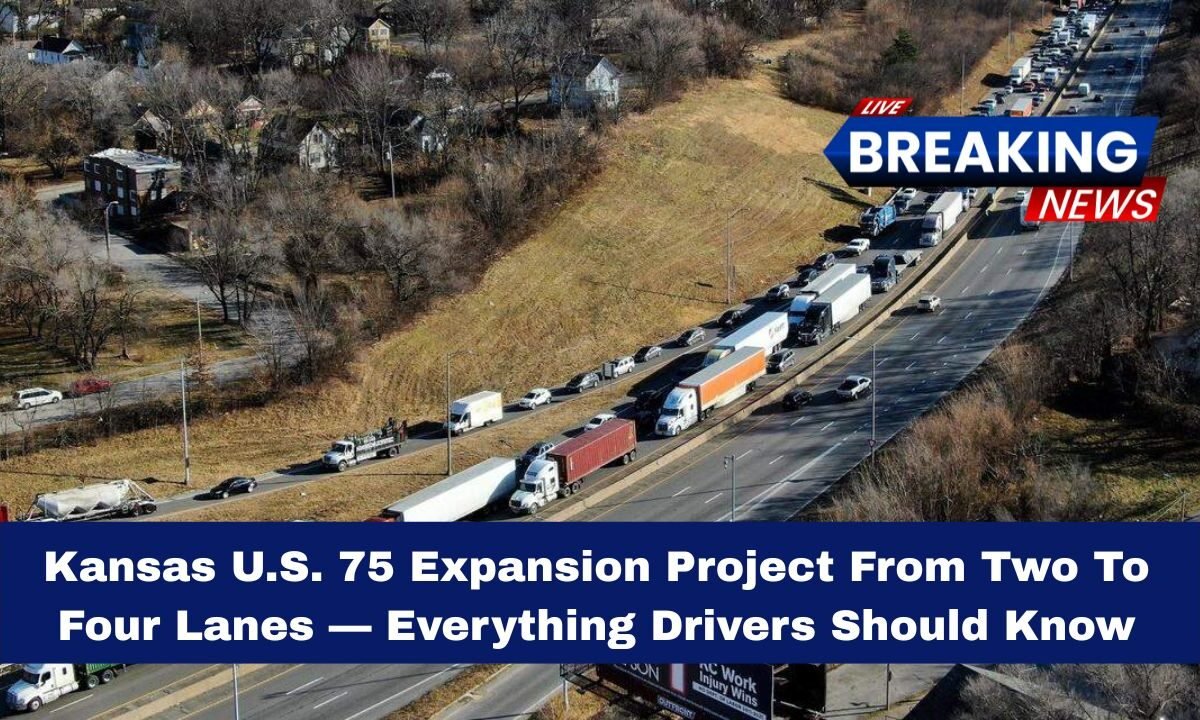The Kansas Department of Transportation (KDOT) is moving forward with a major plan to expand U.S. Highway 75 in northeast Kansas.
The project would widen the busy two-lane stretch between Holton in Jackson County and K-20 in Brown County to four lanes, making travel safer and smoother for thousands of daily commuters.
The initiative is currently in the discovery phase, meaning that engineers, planners, and state officials are evaluating the project’s design, environmental impact, and funding options before construction begins.
Why the Expansion Is Needed
This stretch of U.S. 75 has long been a key route for both local drivers and freight movement in northeast Kansas.
Over the years, rising traffic volumes, limited passing opportunities, and increasing safety concerns have highlighted the need for improvements.
The proposed four-lane expansion aims to:
- Reduce congestion and improve overall travel flow.
- Enhance road safety by minimizing head-on collisions.
- Support local development in Holton, Horton, and surrounding areas.
- Prepare for future growth in both commercial and residential traffic.
The plan also includes interim improvements such as adding shoulders, updated signage, and safer turning zones to benefit drivers before the full expansion begins.
Project Details and Public Involvement
| Project Feature | Description |
|---|---|
| Highway | U.S. 75 in Jackson and Brown Counties |
| Location | From north of Holton to K-20 Highway |
| Length | Approximately 14 miles |
| Phase | Discovery/Planning phase (engineering and study underway) |
| Purpose | Expand from two lanes to four lanes for safety and capacity |
| Funding | Not yet allocated; pending project prioritization |
| Public Involvement | Open house scheduled for November 6, 2025, at Jackson Heights High School in Holton |
| Hours of Meeting | 5:00 PM to 7:00 PM |
| Lead Agency | Kansas Department of Transportation (KDOT) |
Residents and drivers who use this corridor are encouraged to attend the open house meeting to share input and learn more about the study. The feedback collected during this session will help guide design and construction priorities.
What Drivers Can Expect
While construction is still several years away, drivers should expect changes in the long term. The project is designed to accommodate both present and future traffic needs, especially as economic activity in the region increases.
- Short-term: KDOT may make small safety upgrades such as shoulder repairs or signage updates before expansion.
- Medium-term: Once funding is secured, design and environmental review will begin.
- Long-term: Full four-lane expansion with divided sections, better intersections, and new safety barriers.
Drivers are also advised to stay informed through KDOT updates as traffic patterns may temporarily shift during construction phases once work begins.
Benefits of the U.S. 75 Expansion
The U.S. 75 expansion project promises lasting benefits for both residents and travelers in northeast Kansas:
- Improved Safety: Dividing traffic into four lanes reduces collision risks and allows safer overtaking.
- Economic Growth: Businesses and local industries will benefit from faster, more efficient freight and commuter movement.
- Reduced Travel Time: A wider highway allows smoother travel during peak hours.
- Enhanced Connectivity: Improved links between Holton, Horton, and nearby rural communities.
- Future-Ready Infrastructure: Prepares the region for population and industrial expansion.
The U.S. 75 Highway expansion represents a significant step toward improving transportation, safety, and economic growth in northeast Kansas.
By widening the highway from two to four lanes, KDOT aims to make travel faster, safer, and more efficient for everyone.
Although the project is still in its early stages, community input will play a vital role in shaping its outcome.
Residents are encouraged to stay informed, attend public meetings, and prepare for the changes that will help drive Kansas’s infrastructure into the future.




